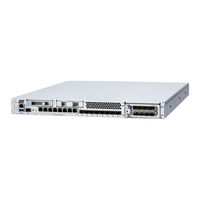Cisco Catalyst 3032 Manuals
Manuals and User Guides for Cisco Catalyst 3032. We have 2 Cisco Catalyst 3032 manuals available for free PDF download: Software Configuration Manual, Getting Started Manual
Cisco Catalyst 3032 Software Configuration Manual (1354 pages)
Table of Contents
-
-
Features53
-
-
-
-
-
-
Configuring NTP161
-
-
-
-
-
-
-
-
-
Limitations235
-
Ciphersuites240
-
-
-
-
-
X Host Mode267
-
MAC Move268
-
-
-
-
Guidelines285
-
-
-
-
Displaying Vlans390
-
Configuring VMPS403
-
-
VTP Modes413
-
VTP Version 3415
-
VTP Pruning416
-
Monitoring VTP428
-
-
-
-
-
-
Blocking State476
-
Listening State477
-
-
-
Configuring Mstp495
-
-
Boundary Ports500
-
-
-
-
How CSUF Works526
-
-
CHAPTER 21 C H a P T E R 21 Configuring Flex Links and the MAC Address-Table Move Update Feature
543 -
-
-
-
-
IGMP Versions603
-
Immediate Leave606
-
Configuring MVR620
-
-
-
MLD Queries633
-
MLD Reports634
-
-
-
-
Remote SPAN691
-
-
Source Ports694
-
Source Vlans695
-
Destination Port696
-
Rspan Vlan697
-
-
-
-
-
Configuring SNMP742
-
-
Event Detectors756
-
Event Detectors759
-
-
VLAN Maps767
-
-
ACL Logging771
-
-
Numbered Acls787
-
Named Acls788
-
-
-
Basic Qos Model818
-
Classification819
-
Mapping Tables827
-
-
-
-
-
-
Enable Proxy ARP938
-
Configuring RIP946
-
Monitoring OSPF962
-
Configuring BGP972
-
-
Configuring Vrfs1007
-
-
Enabling PBR1028
-
-
-
Displaying Ipv61061
-
Understanding HSRP1067
-
-
-
-
-
MD5 Security1108
-
-
-
IGMP Version 11117
-
PIM Versions1118
-
PIM Stub Routing1119
-
IGMP Helper1120
-
Bootstrap Router1121
-
Understanding DVMRP1122
-
Understanding CGMP1123
-
-
SSM IP Address Range1129
-
Configuring SSM1131
-
Configuring Auto-RP1140
-
-
Understanding MSDP1179
-
-
-
MSDP Benefits1181
-
-
-
Troubleshooting1209
-
-
-
Understanding Ping1219
-
-
-
Usage Guidelines1221
-
-
Using TDR1224
-
Using Debug Commands1225
-
-
-
Access Control Lists1285
-
-
Debug Commands1287
-
Hsrp1289
-
MAC Address Commands1294
-
Snmp1297
-
-
Advertisement
Cisco Catalyst 3032 Getting Started Manual (34 pages)
Cisco Systems Catalyst Blade Switch Getting Started Guide

